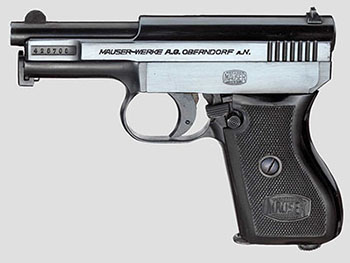 |
|||||||||||||||||||||||||||||||||||||||||||||||||||||||||||||||||||||||||||||||||||||||||||||||||||||||||||||||||||||||||||||||||||||||||||||||||||||||||||||||||||||||||||||||||||||||||||||||||||||||||||||||||||||||||||||||||||||||||||||||||||||||||||||||||||||||||||||||||||||||||||||||||||||||||||||||||||||||||||||||||||||||||||||||||||||||||||||||||||||||||||||||||||||||||||||||||||||||||||||||||||||||||||||||||
 |
|||||||||||||||||||||||||||||||||||||||||||||||||||||||||||||||||||||||||||||||||||||||||||||||||||||||||||||||||||||||||||||||||||||||||||||||||||||||||||||||||||||||||||||||||||||||||||||||||||||||||||||||||||||||||||||||||||||||||||||||||||||||||||||||||||||||||||||||||||||||||||||||||||||||||||||||||||||||||||||||||||||||||||||||||||||||||||||||||||||||||||||||||||||||||||||||||||||||||||||||||||||||||||||||||
|
Mauser Pistols: by Ed Buffaloe and Burgess Mason III
The backstory of the Mauser company is fascinating but beyond the scope of this article to relate in detail. Readers who are interested should peruse the references below, particularly Paul Mauser: His Life, Company, and Handgun Development, 1838-1914 by Baudino and van Vlimmeren and Mauser Pistolen: Development and Production, 1877-1946 by Weaver, Speed, and Schmid. One brief anecdote may provide some insight. Georg Luger served as a salesman and engineer for Ludwig Loewe & Co., the firm which owned the majority shares in Waffenfabrik Mauser. As a salesman for Mauser rifles, he noticed that some of them had a third locking lug on the bolt. Luger also knew that this was an unpatented feature. So he filed a Gebrauchsmuster or utility model, which is a patent-like intellectual property claim peculiar to the German-speaking countries of Europe. He then sued Mauser for infringing his patent rights. Needless to say, this did not endear him to Paul Mauser. Subsequently, Waffenfabrik Mauser developed the Model 1896 pistol, which for a time was the leading candidate to be the official sidearm of the German military. However, the Model 1896 eventually lost out to Georg Luger’s Parabellum pistol, which was adopted by the German navy in 1904 and the army in 1908, and served the German military well into the middle of the 20th century. In addition, the cartridge Georg Luger designed for the German military, the 9 mm Parabellum, became the most widely-used pistol cartridge in the world, and remains so to this day. By the early 1900’s it had become clear that the Mauser Model 1896, while modestly successful commercially, was not going to become a standard military sidearm, so Waffenfabrik Mauser began experimenting with various new designs, all intended to handle a powerful military cartridge. Once the German military settled on the 9 mm Parabellum cartridge, the Mauser company began to focus its efforts on designing a gun for this cartridge. Eventually the concept of a family of guns, all with the identical design, but scaled in size to handle different cartridges, came into being.
Beginning late in 1907 Paul Mauser began to apply for patents that show a gun with a fixed barrel held in place by a long pin which also serves as the recoil spring guide rod. The gun had no breech locking mechanism, was striker-fired, and had what was described in the English language patent as a pivoting bell crank lever for a sear. The early design, which an internal Mauser document refers to as the Model 1909, incorporates a recoil buffer spring (Rückstoßpufferfeder) to help tame the recoil of the 9 mm Parabellum cartridge.
Patents for the Model 1910 and 1914 Most Mauser patents were filed in all the major countries of Europe, plus Britain and the U.S. We are only going to list the German and English language patents in this article. There are some patents describing mechanisms which were never implemented in a production pistol, but the illustrations for which show a gun which is clearly the forerunner of the 1910 Mauser. These patents are:
The patents we have found which were actually implemented in the Model 1910 or Model 1914 are as follows:
Nomenclature
The Mauser company itself did not generally refer to their pocket pistols by model. However, the parts list for the earliest manual was entitled “Mauser-Selbstladepistole M/1910. Kal. 6,35 mm.” Generally, however, the early gun was referred to as the “Mauser Automatic Pistol, Calibre 6,35 mm,” and the later, larger pistol which appeared in 1914 was referred to as the “Mauser Automatic Pistol, Calibre 7,65 mm.” In a 1934 Mauser advertisement the guns were referred to as the “Mauser Selbstlade-Taschen-Pistole Kal. 6,35 mm (9-Lader)” and the “Mauser Selbstlade-Taschen-Pistole Kal. 7.65 mm (8-Lader).” We also note that in an internal memorandum regarding the visit of the Chinese Military Study Commission on 21 June 1910, the 6.35 mm gun is referred to as the Model 1910, and likewise in the ALFA Catalogue of 1911 the 6.35 mm pistol is listed as the Mauser Model 1910. Today collectors distinguish the 6.35 mm pistols collectively as the “Model 1910” and the 7.65 mm pistols collectively as the “Model 1914.” But because there are variations within each model, these further designations have evolved:
It is probably a misnomer to designate the Model 1910/1934 as a separate “type,” as it is mechanically identical to the previous type--it is simply another variant of the Type II New Model. Likewise with the Model 1914/1934--it is a variant of the Model 1914--the two being mechanically identical. We have been unable to trace the exact origin of the above nomenclature. In 1946 W.H.B. Smith did not use it, referring simply to the .25 caliber Mauser or the .32 caliber Mauser, nor did E.J. Hoffschmidt in 1957, nor Matthews in 1962. But by the late sixties of the last century it was current in the U.S., and by the eighties it was current in Germany as well.
The gun is striker fired with simple lockwork consisting of a bell crank lever which rotates from its center. The rear of the lever has an upward projection which serves as the sear. Henceforth we will refer to this as the sear lever. The front of the sear lever sits just behind the trigger. When the trigger is pulled, a spring-loaded catch on the rear of the trigger pushes upward on the front of the lever, which rotates, causing the rear portion of the lever to move downward, releasing the striker. The disconnector is an upward projection on the front of the lever that rises into a hollow in the bottom of the slide when the slide is in battery. When the slide is out of battery, the disconnector is pressed down by the slide, forcing the sear upward and preventing the release of the striker. The lockwork is accessed through a side plate on the left side of the gun which is distinguished by a rotating lever just above the trigger which serves as a latch for the side plate, giving the gun its English language nickname, the “Side Latch.” In fact the trigger pin is pegged to the latch and is removed with it, so that the trigger is released and removed at the same time. (This is vaguely reminiscent of the P08 Luger.) It is possible to remove the side plate without removing the barrel or slide, though there are few if any circumstances in which that might need to be done. The latch pin is more than a little difficult to reinstall, due to the trigger spring which tends to push the trigger out of position, and so the side plate should not be removed in the field.
The manual safety locks the sear by physically blocking it. The safety, when pressed down, is engaged and locked in the down position by flat spring which sits beneath the left grip, to the top of which is attached a button. When the button is pressed, the safety is released and moves upward under spring tension. The spring that tensions the safety lever is a bent flat spring, the bottom arm of which tensions the safety and the upper arm of which tensions the sear. A projection at the rear of the safety arm serves to lock the slide open when the slide is drawn to the rear and the safety applied. The grip is a single piece of wood carved to very closely fit the grip frame, held in place by a screw on either side. The wood grip is scored on either side in a criss-cross diamond pattern--it might be called checkering, but does not have sharp points. In German the description for the grip pattern translates as “fish scale.” Hard rubber grips were also available very early in production. The hard rubber grips are checkered on either side and have a “WM” (Waffenfabrik Mauser) monogram at the top.
The slide is open at the top, revealing the front two inches of the barrel, with arms of the slide extending on either side beneath the barrel. The open-top design allows the barrel to be removed when the slide is retracted, without the necessity of removing the slide itself. There is a bullet-shaped ejection port on the right side of the slide. The extractor is a piece of spring steel distinguished in the side latch model by a bottle-neck shape, the rear portion of the piece being narrower than the front. There are nine triangular-cut serrations at the rear of the slide to aid in retraction. The finish is rust blue. A very few side latch pistols have been recorded with a factory nickel finish--these were likely special order guns. The trigger, the end of the barrel retaining rod, extractor, and grip screws are nitrate or fire blue. The front sight is fixed. The rear sight is dovetailed into the slide and drift adjustable. The magazine is of the standard type with the baseplate flush with the bottom of the grip. The magazines are nickeled. Some have a star stamped on the baseplate. Early production magazines have no holes for viewing cartridges, but later guns have eight staggered holes on each side. There is no magazine safety on the side latch pistol--the gun can be fired with the magazine removed. The magazine holds nine cartridges. The serial number is stamped on the left side of the slide at the front, and on the frame at the rear just above the grips. The last three digits of the serial number are also stamped on the front plate of the barrel pin, and on the trigger of a few early examples. The Mauser barrel logo is stamped on the side plate just above the grip, centered between the back of the latch and the rear of the plate.
There are three variants of the 1910 Side Latch: 1st Side Latch Variant: SN 1-4900 (approximately)
WAFFENFABRIK MAUSER A.-G. OBERNDORF A.N. MAUSER’S PATENT The right side of the slide is blank, except for the vertically stamped crown-over-crown-over-U nitro proof mark at the front. Early examples, up to approximately serial number 2500 have an ejector milled into the frame. The company must have realized it was superfluous, as the compressed striker serves to eject the spent cartridge case, and so it was eliminated to save manufacturing time. These early guns also come with a magazine that is not drilled for viewing cartridges. After approximately serial number 2500 magazines have eight holes drilled in the sides, alternating from left to right. Early examples also have a long spring release for the safety, extending to the bottom of the frame beneath the left grip, up to approximately serial number 3000. After serial number 3000 the spring release only extends halfway down the grip. (Please write to us if you have an early example and can help define more precise serial number ranges.*) 2nd Side Latch Variant: SN 4900-16100 (approximately) The second variant Side Latch has a larger safety release button with circular grooves, about 6 mm in diameter, and is otherwise identical with the first variant guns after serial number 3000. 3rd Side Latch Variant: SN 1610-60470 (approximately) The third variant Side Latch has a small (approximately 2 mm) groove milled at the front of the frame to allow easy clearance by the lower lip of the front plate of the barrel pin. The slide inscription on the left side of the slide is in upper case sans-serif characters, as follows: WAFFENFABRIK MAUSER A.-G. OBERNDORF A.N. MAUSER’S PATENT Some examples of Side Latch pistols, particularly in the later serial number ranges, have the following use markings:
Production of the Side Latch ended in June or July of 1913 and the company spent several months tooling up for production of the New Model, which began late in 1913. The gun was given a major redesign internally, with minor external changes. Today it is referred to by collectors as the Model 1910/14. The company began referring to the early side latch pistol as the Standard or Old Model, while the new design was of course called the New Model. Modern usage often refers only to the first variant of the redesigned gun as the New Model, but in reality all guns after 1914 are New Model variants. The barrel pin is retained by a checkered latch on the bottom of the frame, which is attached to the front of a flat spring. The front plate on the barrel pin is no longer grooved on the front, but the sides of its lower lip are grooved. The coil spring at the rear of the barrel pin is eliminated. The barrel pin extends through a hollow guide rod inserted into the recoil spring from the rear. The ejection port on the New Model is slightly shorter and more nearly oval shaped. The extractor is slightly longer and is the same width throughout its length.
The second innovation is a redesigned disconnector. The sear lever no longer has an upward projection at its front end to serve as a disconnector. Instead, there is a second lever in the frame just over the trigger which depresses the spring-loaded catch on the back of the trigger whenever the slide is out of battery, preventing the catch from engaging the sear lever. The early disconnector levers are milled and have a pin on the back that fits into a hole in the frame. Also, instead of turning on a pin staked into the frame, the milled sear lever itself has a shallow pin on its back side which fits into a hole in the frame. Why the disconnector design was changed is not clear.
When the last round in a magazine is fired, the rear of the magazine follower rises up to lock the slide open. As the magazine is withdrawn, the rear corner of the slide lock moves upward into a recess in the base of the slide, holding it open. At the same time a portion of the mechanism moves in such a way that it locks the the sear. When a magazine is inserted, the rear corner of the mechanism moves downward, releasing the slide, and the sear lever is freed.
One last minor change: The striker is redesigned to have an integral guide rod. The small hole at the rear of the frame is enlarged. It is now much easier to visually distinguish when the gun is cocked because the end of the guide rod only appears when the striker is locked behind the sear. This change eliminates the separate guide rod and the small spring at its end. There are several variants of the New Model . First Variant New Model - SN 60500-115000 (approx.) This is the variant most often referred to as the New Model, though in reality all subsequent guns are technically New Models as well. This variant was made between 1914 and 1919, with at least two sub-variants. The first variant New Model looks very much like an Old Model with no side latch, retaining the nine triangular-cut slide serrations and the address on the left side of the slide in all-capital sans-serif characters (like the third variant Side Latch). The latch-less side plate has the Mauser powder barrel logo centered on it. The front sight is notched instead of half -moon shaped. The barrel pin no longer protrudes through the front plate (i.e., the front plate is flat), which has no grooves on the front. However, there are two grooves on the side of the lip which projects beneath the frame.
The first and largest sub-variant (from approximately serial number 60500 to 107000) has the crown-over-crown-over-U proof mark stamped vertically on the right side of the slide, just behind the muzzle. The right side of the slide remains blank except for the proof mark. The second sub-variant (from approximately serial number 107000 to 115000 has the crown-over-crown-over-U proof mark stamped horizontally on the right side of the slide, just behind the muzzle. Within this sub-variant, intermittently, will be found guns with no banner on the sideplate and barrels with a band around them at the front sight. Minor variations in the slide address are also documented. Beginning at about serial number 112000 the checkered latch for the barrel pin is eliminated and the flat spring that tensions it becomes more narrow and is curved into a rounded shape at its end which fits into a slot on the bottom lip of the front plate. Some examples of the first variant New Model have the following use markings:
There are very few known examples of Mauser 1910 pistols in the serial number ranges from 115000 to 150000 and from 156000 to 200000. These gaps may be from stopping production of the 6.35 mm (.25 cal) model during the war because of greater demand for the 7.65 mm (.32 cal) model. Interim Production - SN 150000-156000 and 200000-207000 (approx.) World War I ended on 11 November 1918. After the war, in 1919, Mauser began a redesign of the New Model pistol. In the interim between 1919 and 1921, some guns were made that may be classified as late first variants, some were made that may be classified as early second variants, and some guns were made that may be classified as hybrids of the two. We must leave it up to the individual owner or collector to make this determination. The use of existing parts at the end of the war to continue production in the post war economy may explain why many minor differences are encountered in this period. These differences include side plates with and without a Mauser banner, slides with different styles of address stampings, milled or stamped magazine and barrel retaining rod catches, milled or stamped other small internal parts, one and two part strikers, barrels with and without barrel bands, and smooth or button faced barrel retaining rods. The method of stamping serial numbers also varied, with some early examples having the complete serial number stamped on the rear of the frame, and some with partial frame serial enumeration of either three or four digits. It is likely that production and assembly of the second variant started before all parts for the first variant had been assembled. To prevent the older parts from being wasted they were most likely assembled concurrently in separate batches. Serial numbers were assigned sequentially regardless of features of the batch. Please write to us if you have a gun of interest in either of these serial number ranges.* Second Variant New Model - SN 207000-342000 (approx.) This is the largest contiguous serial number range for any variant of the Model 1910, and as a result we refer to it as the Standard Model. Pender refers to it as the “post-war commercial model .” This variant was made from approximately 1921 through 1928. The primary external changes are a stepped grip frame, a redesigned magazine release, new slide serrations, and a new slide inscription on the left side in all capital sans-serif italic characters as follows. WAFFENFABRIK MAUSER A.-G. OBERNDORF A.N. Most side plates have the Mauser powder barrel logo centered on them, but we continue to see intermittent side plates that are blank. Slightly larger logos are also found, probably indicating that a new roll stamp had been cut. The magazine release is redesigned to reduce costs and speed manufacture--the flat steel is formed into a curved release and then tempered, so that the spring and the release are contiguous. No milling is necessary--this is referred to as a stamped release.
A new style of slide serrations appears: seven broad flat-bottomed plunge-milled serrations. Production of other parts is simplified in this period. The safety lever is stamped instead of milled . The shallow pin on the back of the disconnector lever is eliminated, so this part also can be stamped. A minor change is made to the frame to accommodate the redesigned disconnector. Front plates on the barrel pin vary between smooth-faced and “button-faced” (i.e., with the pin protruding through the plate, some with grooved sides and some without.
Beginning around serial number 239000 a right side slide legend appears in sans-serif italic characters as follows: Mauser - 6,35 Beginning around serial number 256100 round half-moon front sights begin to appear again. Some have barrel bands and some do not. The guns continue to have a rust blue finish. The trigger, barrel retaining rod, extractor, and grip screws are nitrate or fire blued. The grip is either checkered wood or hard rubber with a WM monogram. The magazines bodies have a bright “in the white” finish with three vertical slots in the left side. The magazine base has a square front with an indent in lower serial numbers and a notched base in higher serial numbers. The notch in the base allows the magazine spring to retain the base on the magazine tube. Magazine bottoms are finished in a nitrate blue. Some magazines are marked with the Mauser banner, either acid etched, or stamped on the tube or the base. Some examples of the second variant New Model have the following use markings:
Third Variant New Model - SN 356900 - 404800 (approx.) Pender refers to this model as the 1934 Transitional model, though it might better be described as the as the 1928-1936 Transitional model. In 1922 Waffenfabrik Mauser AG changed its name to Mauser-Werke AG to reflect its diversification into other manufacturing sectors after World War I. The name change finally reached the Model 1910 in the year 1928 when a new slide inscription appeared in the same all-capital sans-serif italic characters used in the previous variant: MAUSER-WERKE A.-G. OBERNDORF A.N.
The right side inscription remains the same as on the previous variant through approximately serial number 365900. Between approximately serial numbers 367000-388000 the right side of the slide was stamped in all-capital sans-serif italic characters as follows: Cal - 6,35 We estimate that approximately 58,300 where made with these features. Many changes occurred in this serial number range. The method of stamping serial numbers varied within this model from external to internal, beginning around serial number 376400. Partial serial enumeration on all except the slide serial number is seen, with either 2, 3, or 4 digits being used. Early examples continue to have a rust blue finish, but this was changed to salt blue around serial number 370000. Sometime between 370000 and 390000, Mauser began to stamp serrations on the bottom of the magazine release. The grip continues to be either checkered wood or hard rubber with an MW monogram. The magazine body has a bright unblued finish with three witness slots in each side. The magazine
base has a square-front notched base in lower serial numbers and a square-front, clipped toed, notched base in higher serial numbers. Magazine bottoms are finished in blue. Most magazines
are stamped with the Mauser banner on the base. Cal. 6,35-D.R.P.u.A.P. Some examples of the third variant New Model have the following use markings:
Fourth Variant New Model or Model 1910/34 - SN 401800-429000 (approx.)
To give the gun a cleaner look, partial serial numbers were no longer stamped on the back of the frame or on the bottom of the sideplate. The frame serial number was moved to the left side beneath the grip, and the sideplate serial number was moved to the back side of the plate. The front plate of the barrel pin is perfectly smooth, with no grooves on the front or side. The finish is a high-polish salt blue. A few guns are known to have been nickel plated, and some have mixed nickel and blue parts. The curved one-piece grip is either walnut with light checkering, or black plastic. The plastic grip (sometimes said to be hard rubber or bakelite) is a new design with the Mauser powder barrel logo at the bottom on a checkered field. Early magazine bodies are rust blued and have three slots for viewing cartridges. Later magazines are salt blued and may have nine round holes in the side for viewing cartridges. Magazines have a notched base with the Mauser banner and most will feature a round-front base, though some retain the earlier square-front base. There are three minor sub-variants, the first having no milled slot for the serial number (serial numbers 401800-423000) and the second having the milled slot (serial numbers 423000-429000). Finally, very late examples, after approximately serial number 428000, have the eagle over N nitro proof mark. The eagle over N proof was used beginning early in 1940. Production is believed to have continued at least through 1939, and possibly into 1940. Some examples in this serial number range have the following use markings:
Part II: The Mauser Model 1914 |
|||||||||||||||||||||||||||||||||||||||||||||||||||||||||||||||||||||||||||||||||||||||||||||||||||||||||||||||||||||||||||||||||||||||||||||||||||||||||||||||||||||||||||||||||||||||||||||||||||||||||||||||||||||||||||||||||||||||||||||||||||||||||||||||||||||||||||||||||||||||||||||||||||||||||||||||||||||||||||||||||||||||||||||||||||||||||||||||||||||||||||||||||||||||||||||||||||||||||||||||||||||||||||||||||
|
* Please email Burgess Mason with photographs, information, or inquiries about Mauser pistols. |
|||||||||||||||||||||||||||||||||||||||||||||||||||||||||||||||||||||||||||||||||||||||||||||||||||||||||||||||||||||||||||||||||||||||||||||||||||||||||||||||||||||||||||||||||||||||||||||||||||||||||||||||||||||||||||||||||||||||||||||||||||||||||||||||||||||||||||||||||||||||||||||||||||||||||||||||||||||||||||||||||||||||||||||||||||||||||||||||||||||||||||||||||||||||||||||||||||||||||||||||||||||||||||||||||
|
|||||||||||||||||||||||||||||||||||||||||||||||||||||||||||||||||||||||||||||||||||||||||||||||||||||||||||||||||||||||||||||||||||||||||||||||||||||||||||||||||||||||||||||||||||||||||||||||||||||||||||||||||||||||||||||||||||||||||||||||||||||||||||||||||||||||||||||||||||||||||||||||||||||||||||||||||||||||||||||||||||||||||||||||||||||||||||||||||||||||||||||||||||||||||||||||||||||||||||||||||||||||||||||||||
|
Copyright 2017 by Ed Buffaloe and Burgess Mason. All rights reserved. |
|||||||||||||||||||||||||||||||||||||||||||||||||||||||||||||||||||||||||||||||||||||||||||||||||||||||||||||||||||||||||||||||||||||||||||||||||||||||||||||||||||||||||||||||||||||||||||||||||||||||||||||||||||||||||||||||||||||||||||||||||||||||||||||||||||||||||||||||||||||||||||||||||||||||||||||||||||||||||||||||||||||||||||||||||||||||||||||||||||||||||||||||||||||||||||||||||||||||||||||||||||||||||||||||||
|
|
|||||||||||||||||||||||||||||||||||||||||||||||||||||||||||||||||||||||||||||||||||||||||||||||||||||||||||||||||||||||||||||||||||||||||||||||||||||||||||||||||||||||||||||||||||||||||||||||||||||||||||||||||||||||||||||||||||||||||||||||||||||||||||||||||||||||||||||||||||||||||||||||||||||||||||||||||||||||||||||||||||||||||||||||||||||||||||||||||||||||||||||||||||||||||||||||||||||||||||||||||||||||||||||||||
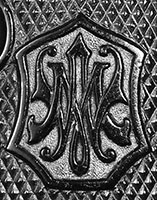
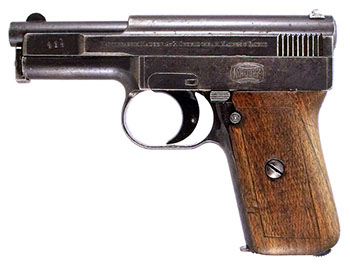
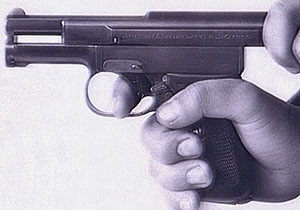
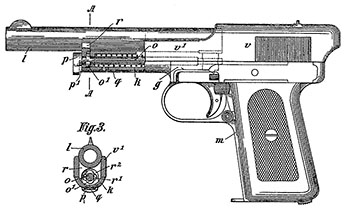
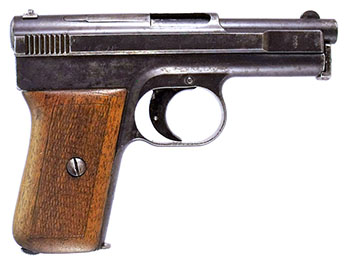
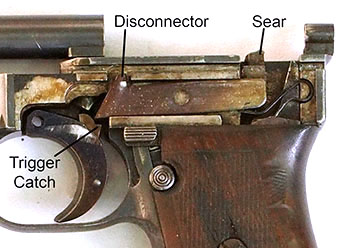
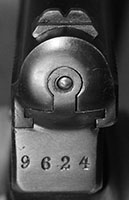
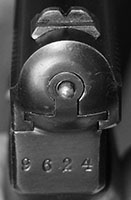


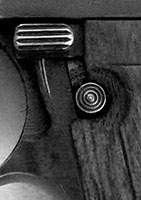
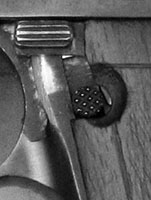
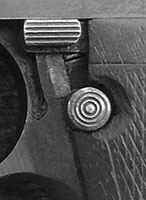
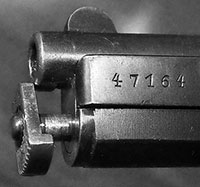
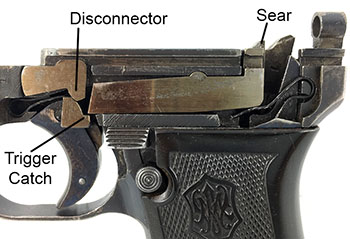
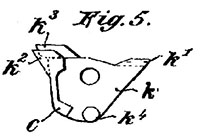
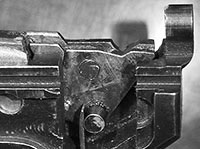
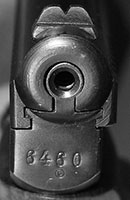
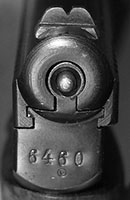




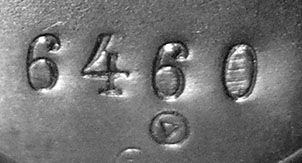 contract with Portugal for Mauser 1910 pistols.
Of course, we cannot prove a negative, and we cannot say that the pistols were never sold in Portugal. Certainly there were various Mauser
dealers that would have been capable of signing and filling a contract with Portugal, but until positive evidence for a Portuguese contract is located we must reserve judgment
on the issue.
contract with Portugal for Mauser 1910 pistols.
Of course, we cannot prove a negative, and we cannot say that the pistols were never sold in Portugal. Certainly there were various Mauser
dealers that would have been capable of signing and filling a contract with Portugal, but until positive evidence for a Portuguese contract is located we must reserve judgment
on the issue. 
